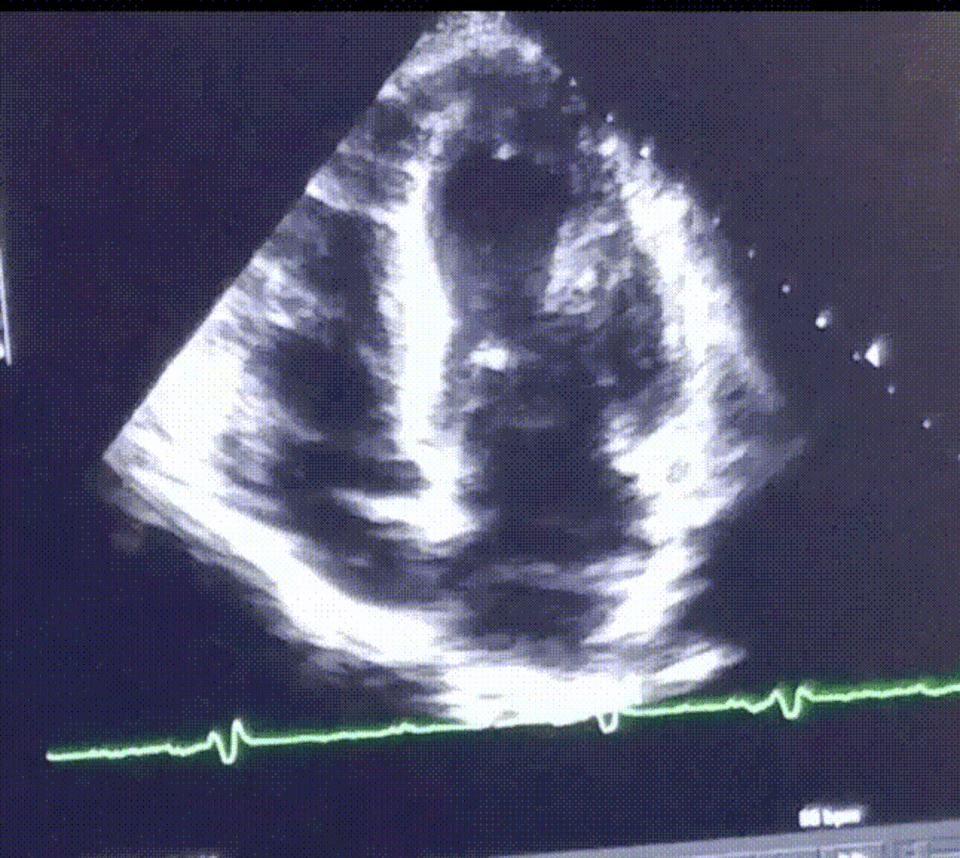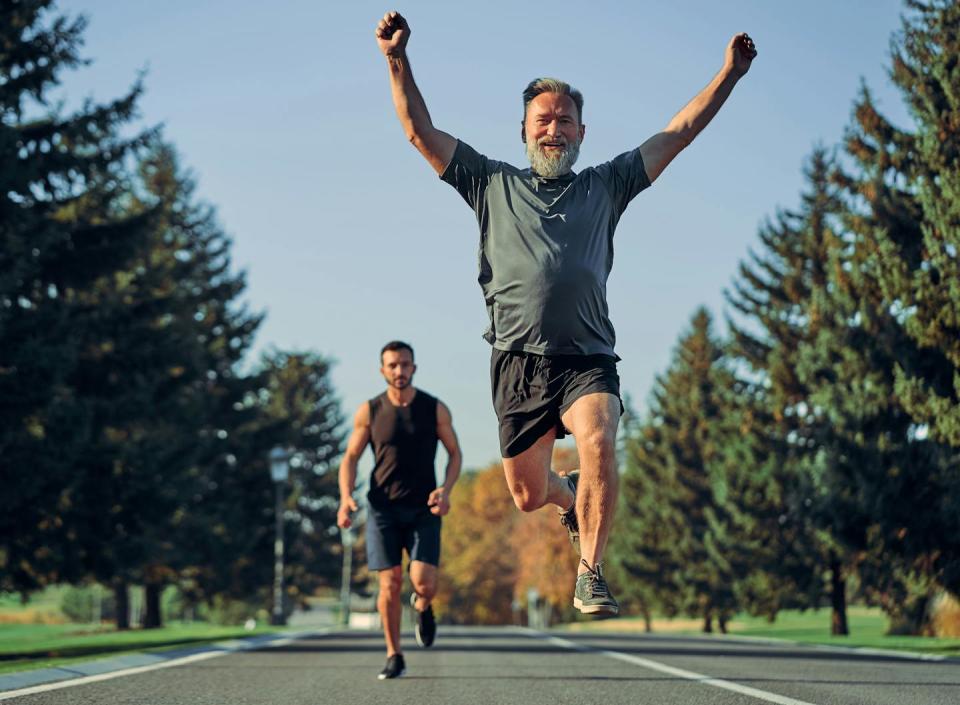Your heart changes in size and shape with exercise – this can lead to heart problems in some athletes and exercise rats
Exercise has long been recognized by doctors, scientists and public health workers as an important way to maintain good health throughout a person’s life. It improves general fitness, helps build strong muscles and bones, reduces the risk of chronic disease, improves mood and slows down the decline in the body.
Exercise can also significantly reduce the risk of developing conditions that affect the heart, such as high blood pressure, high cholesterol and obesity. But too much exercise throughout life can also damage the heart, leading to the development of a condition called athletic heart.
As the director of sports cardiology at the University of Colorado Anschutz Medical Campus, I am often asked how much exercise and what type of exercise is necessary to reap the benefits of exercise. Many people also wonder about the dangers of exercise, and what happens if you exercise too much.
In general, the American Heart Association recommends 150 minutes of moderate exercise, such as brisk walking, or 75 minutes of vigorous exercise, such as running, each week. It also recommends muscle-strengthening exercises at least twice a week.
When people exceed these guidelines, the heart may regenerate itself in response – that is, it begins to change its size and shape. As a result, the work of the heart can also change. These changes in heart shape and function in people who exercise heavily are called the athletic heart, or athlete’s heart. An athletic heart does not necessarily cause problems, but in some people it can increase the risk of certain heart problems.
What is an athletic heart?
To understand how exercise affects the heart, it is important to consider what type of exercise you are doing.
Exercise is generally divided into two broad categories: vigorous and steady.
Vigorous exercise, such as running, cross-country skiing, and soccer, requires the heart to pump more blood, compared to the amount supplied by the body at rest, in order to maintain performance. For example, when a person runs, the blood that the heart pumps to the body may increase three to five times compared to the rest.
Sustained exercise, such as weightlifting, gymnastics or rock climbing, requires the body to use skeletal muscles to push or pull weight. Although the heart pumps more blood to the skeletal muscles that work during these events, these types of exercise rely on the muscle’s ability to carry body weight. For example, in order to do curls with dumbbells, the biceps must be strong enough to lift the desired weight.


Some exercises, such as rowing or cycling, are more intense and more stable because they require the heart to pump more blood while at the same time requiring more muscle power to maintain the effort.
It is important to distinguish between vigorous and moderate exercise because the heart adapts differently to the type of exercise you do over time. Vigorous exercise increases the volume of blood that the heart pumps and can cause the heart to dilate, or enlarge, over time. Sedentary exercise increases the pressure on the heart and can also cause it to increase over time but with thicker walls.
Who creates an athletic heart?
Exercising beyond the guidelines, such as exercising for more than an hour on most days of the week, can lead to the development of an athletic heart. Athletic heart disease often occurs among endurance athletes, who regularly compete in activities such as marathons or other long-distance events. Most exercise a few hours a day and more than 12 to 15 hours a week.
For example, in runners, the heart regenerates itself by pumping more blood. As a result, the chambers of the heart expand to hold and pump more blood. Among the stimulants, the heart regenerates itself by thickening in response to increased pressure applied to the heart.
Exercise is good for the body, and athleticism stems from a lifelong commitment to an activity that promotes health. But there may be other problems arising from the athletic heart.
First, athletes with enlarged hearts may be at risk of developing atrial fibrillation, which is an abnormal heart rhythm that occurs more often in older people or people those with high blood pressure or heart disease. Abnormal heart rhythms are worrisome because they can lead to stroke.
There are many reasons why atrial fibrillation can occur in athletes. An enlarged atrium – the upper chamber of the heart – can become swollen and scarred, increasing the risk of atrial fibrillation. Stress and environmental conditions can also work together to increase the risk of arrhythmia.


Coronary artery calcification, or CAC, is another concern among elite athletes. Coronary artery calcification, which tends to occur in older adults or those with risk factors for coronary artery disease, increases the risk of having a heart attack or stroke. In recent years, doctors have been using imaging tests to monitor calcium buildup in their patients’ arteries to try to determine their risk of heart attack or stroke over time.
It is not entirely clear why elite athletes develop coronary artery disease. Fortunately, athletes do not appear to have an increased risk of heart disease, even among those with very high levels of CAC. For example, a large study of nearly 22,000 participants found that even athletes who exercised heavily and had high levels of CAC did not have an increased risk of cardiovascular disease. it’s heart disease over the next ten years.
Some athletes are concerned about calcium buildup in their arteries and may wonder whether or not they should take medications such as aspirin or statins. But the risks vary from person to person, so anyone concerned about CAC should talk to their doctor
Putting exercise in its place
Although elite athletes may have an increased risk of developing an athletic heart, there is no doubt that exercise is still one of, if not the best, method. of maintaining good health.
For example, if a person does not exercise regularly, their heart will harden and not pump as much blood as it used to. Regular exercise – especially vigorous exercise like running – keeps the heart in tune and prevents stiffness. A compliant heart will expand more as it fills with blood, and pump more blood with each heartbeat. A stiff heart has difficulty filling blood and has difficulty pumping blood around the body.


In general, regular exercise throughout adulthood encourages the heart to remain strong and flexible even into old age. Even if a person were to start exercising regularly in their 40s to 50s, it is possible to reverse some of the effects of sedentary aging.
For example, a 2018 study of 53 sedentary people in their 50s found that those who participated in a two-year exercise program using a combination of running, cycling and elliptical exercise were have more harmonious hearts compared to those hearts. who did not exercise.
It’s never too late to start exercising. Following regular exercise guidelines can help promote physical and mental health and help your heart stay small throughout your life.
This article is published by The Conversation, a non-profit, independent news organization that brings you facts and honest analysis to help you make sense of our complex world. Written by: William Cornwell, University of Colorado Anschutz Medical Campus
Read more:
William Cornwell does not work for, consult with, own shares in, or receive funding from any company or organization that may benefit from this article, and has disclosed no relevant relationships. without their academic appointment.
#heart #size #shape #exercise #lead #heart #problems #athletes #exercise #rats
